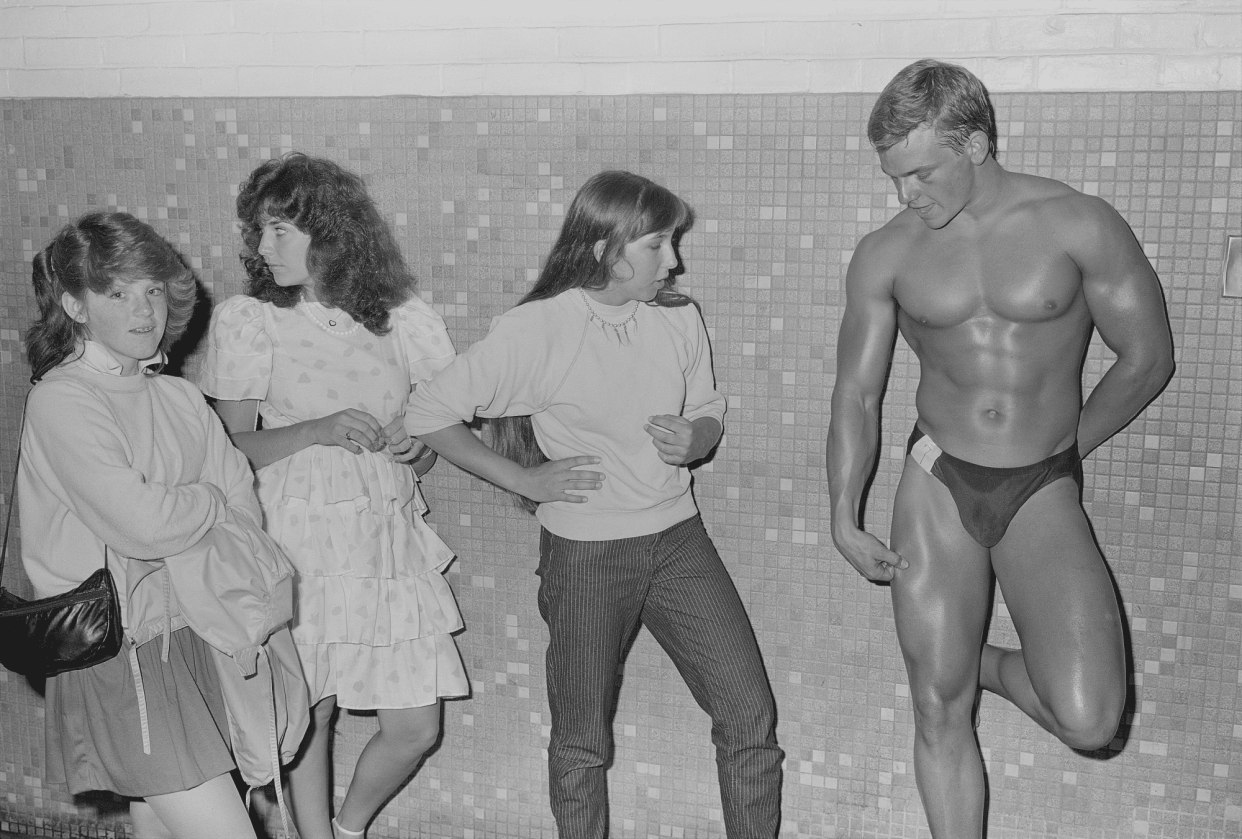A bodybuilder pinches his bulging thigh – Sergio Purtell’s best photograph

I’d been studying architectural design in Chile and thought I would do the same when I got to the US. But at university there, photography was one of my subjects – and the minute I put that first sheet of paper in the developer, it was magic to me. There is so much you can say in just one frame. I found it thrilling and overwhelming.
I’ve been living in the US for more than 50 years now and a lot of the pictures from my new book, Moral Minority, were made in the 1980s, when my notion of being a photographer was just beginning to form. The country was new to me and I wanted to figure out how to fit into it and how things worked.
The experience was something akin to what Robert Frank pursued in The Americans: that is to say, an immigrant to this country seeking to understand it through making pictures. I approach my work perhaps more gently than Frank, and attempt to be gracious and without judgment – the viewer is free to make their own decisions about these places and people.
Countless events take place across this country each year: parades, agricultural fairs, sports events, flower and reptile shows. I’ve always been interested in these small events where people gather to perform or compete in some way. I’m curious about human behaviour, how people relate to each other in common spaces. To me, streets and public spaces are like theatre, but the lack of any rehearsal and the element of surprise elevates and transcends our expectations. Henri Cartier-Bresson called it the “decisive moment” – but I like to call it the “indecisive moment”.
Why are photographs of muscular physiques so eye-catching?
This was taken at a small high school event, nothing professional: a contest for the perfect bodybuilding physique. It was the late 1980s, so people didn’t walk around with cell phones and they had different notions about being approached and photographed in public. My subjects always knew they were being photographed because I used a Fuji 6x9 camera with a flash – definitely hard to hide.
The competitor was having a break. Maybe he knew the girls already. He was chatting with them – the conversation obviously having to do with the quality of his physique because of the way he’s pinching his thigh muscle and the level of perfection in it. That’s what the whole event is about: who can create the “perfect body” by working hard and maybe becoming the next Arnold Schwarzenegger?
Aesthetically, why are photographs of muscular physiques so eye-catching? People flock to see Michelangelo’s David. There is a certain exhibitionism on display in my pictures, but they show the wider scene. And, speaking technically, the way skin looks when photographed and printed in silver has a luminous quality that makes it feel very real.
This shot represented a transition period for the man and for the girls: that moment when young people are particularly concerned with their bodies and how they present to others; when there is a lot of showing off and fascination; when everyone is looking for perfection in themselves and others. When I look at this photo now, it makes me feel that life goes on, but many things have not changed.
• Sergio Purtell’s Moral Minority is published on 15 July by Stanley/Barker.
Sergio Purtell’s CV
Born: Santiago, Chile, 1955.
Trained: BFA from Rhode Island School of Design; MFA from Yale.
Influences: “Eugène Atget, Brassaï, Henri Cartier-Bresson, Walker Evans, Robert Frank, Tod Papageorge, Richard Benson, Robert Adams, Frank Gohlke.”
High point: “In my printing business, I have printed for some of my favourite photographers. For instance, LaToya Ruby Frazier is having a survey at MoMA in New York and we printed everything that hangs on the walls.”
Low point: “I can’t think of one. As long as I can help others and have some time to do my own work, I can’t complain. Especially at my age!”
Top tip: “Life is a long journey: love what you do and what you have. Try to make work that makes you happy, fulfils you and keeps you growing as a person and as an artist.”


